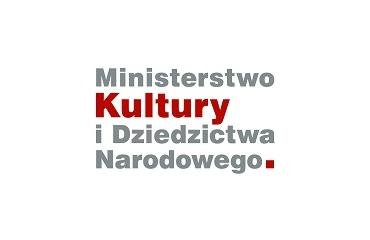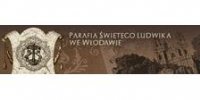Getto we Włodawie – zapomniana karta historii to projekt upamiętniający historię z okresu II wojny światowej w czasie okupacji hitlerowskiej we Włodawie.
Getto powstało w styczniu 1940 roku. Było ono zlokalizowane w rejonie ulic: Wyrykowskiej (obecnej ul. Tysiąclecia Państwa Polskiego), Okunińskiej i Kotlarskiej. Teren getta był ogrodzony drutem kolczastym i wysokim płotem. Uwięziono w nim ok. 9 tys. osób - miejscowych Żydów oraz przesiedleńców z Kalisza, Mielca i Wiednia. Ludność z getta pracowała w lokalnych obozach pracy, min. zajmowała się osuszaniem bagien czy Wielkiego Stawu Włodawskiego. Część z nich pracowała przy budowie nazistowskiego obozu śmierci w Sobiborze. Była to ciężka i wielogodzinna praca, za którą nie otrzymywano żadnego wynagrodzenia.
Łącznie getto zajmowało powierzchnię ok. 22 000 metrów kwadratowych i posiadało niewielką liczbę budynków mieszkalnych. Stwarzało to bardzo trudne warunki bytowe.
Głównym problemem, jaki dotykał jego mieszkańców był narastający głód. Większość Żydów nie miała środków na zdobywanie pożywienia. Racje żywności wydawane przez Judenrat stale się zmniejszały. Przydział chleba wynosił 100 gramów na osobę. Zakup produktów żywnościowych w polskich sklepach był zakazany. Jedynym sklepem, w którym mogli się zaopatrywać Żydzi był utworzony specjalnie dla nich sklep zwany „kooperatywą”, prowadzony przez Nechamę Lustigman oraz Elę Rychtman.
W gettcie szerzyły się również choroby i nędza. W 1941 r. wybuchła epidemia tyfusu, przywleczonego od robotników pracujących w odległych obozach w Krychowie, Osowie, Sawinie.
Kres włodawskiego getta nastąpił w pierwszych dniach 1943 roku, kiedy to wywieziono ostatnich Żydów do obozu zagłady w Sobiborze. Wtedy miasto zostało uznane za Judenrein, czyli wolne od Żydów.
Przed zgotowaną przez Niemców zagładą zdołali się uchronić nieliczni. Większość Żydów z Włodawy ukrywała się w lasach, niektórzy trafiali do partyzantki. II wojna światowa zmieniła skład narodowościowo – wyznaniowy Włodawy na zawsze. Po wojnie grupa ocalałych Żydów ciągle zmniejszała się. Już w 1946 roku było ich 40, w 1947 roku 5 osób, a w grudniu 1948 roku 3 osoby.
Projekt ma na celu przybliżyć historię tego miejsca, pomóc w poznaniu naszej wspólnej przeszłości oraz upamiętnić zgładzonych Żydów włodawskich.
Dofinansowano ze środków finansowych Ministra Kultury i Dziedzictwa Narodowego pochodzących z Funduszu Promocji Kultury w ramach Programu Miejsca pamięci i trwałe upamiętnienia w kraju.
The Włodawa Ghetto: A Forgotten Page of History is a project commemorating a facet of the history of the Second World War from the years that Włodawa spent under Nazi occupation. The Włodawa ghetto was established in the town in January 1940 in the region of Wyrykowska, Okuniński and Kotlarska Street. It was closed off behind barbed wire and a high fence. Many of the nine thousand or so Jews imprisoned there were local people. The rest had been deported from the central Polish city of Kalisz, the south-eastern Polish city of Mielec and Vienna and forcibly resettled. The ghetto’s inhabitants worked in the nearby forced labour camps, where their efforts were turned to the draining the Great Włodawa pond and the local marshland. Some of them were assigned to building the Nazi death camp in the village of Sobibór, which lies around eight kilometres to the south-east of Włodawa. It was unrelentingly hard work and they laboured for long hours with no remuneration whatsoever.
In total, it covered an area of 22 000 square metres and had none too many residential buildings. The Jews herded into it were permanent residents of Włodawa, together with escapees and people who had been forcibly resettled. Their sheer numbers placed a severe strain on the available accommodation.
The paramount problem faced by the inhabitants of the ghetto were the ever-spreading tentacles of starvation. The majority had no wherewithal for obtaining food. The rations allocated by the Judenrat grew steadily smaller. The bread ration was a hundred grams per person per day. Jews were forbidden to buy food from Polish shops. There was only one shop where they were permitted to purchase supplies. Established especially for that purpose by the Germans, it was run by Nechama Lustigman and Ela Rychtman.
Starvation, disease and destitution were rampant in ghetto. Before long, workers from the forced labour camps in the villages of Krychów, Osowa and Sawin brought typhus to Włodawa and an epidemic ensued.
The ghetto came to an end in the early days of 1943, when the last of the Jews were transported to the Sobibor extermination camp. At that stage, the town was deemed to be Judenrein; in other words, ‘cleansed/free of Jews’.
There were few who managed to escape the annihilation prepared for them by the Germans. Most of the Jews of Wlodawa who succeeded in avoiding both slaughter on the spot and the death camps hid in the forests. Some of them wound up with the partisans who were active in the area.
The Second World War changed the ethnic and religious composition of Włodawa for ever. After the hostilities came to an end, the number of surviving Jews dwindled steadily. By 1946, there were only forty. In 1947, there were five.
The project is intended to give visitors an insight into the history of the ghetto, provide a glimpse of our shared past and commemorate the slaughtered Jews of Włodawa.










